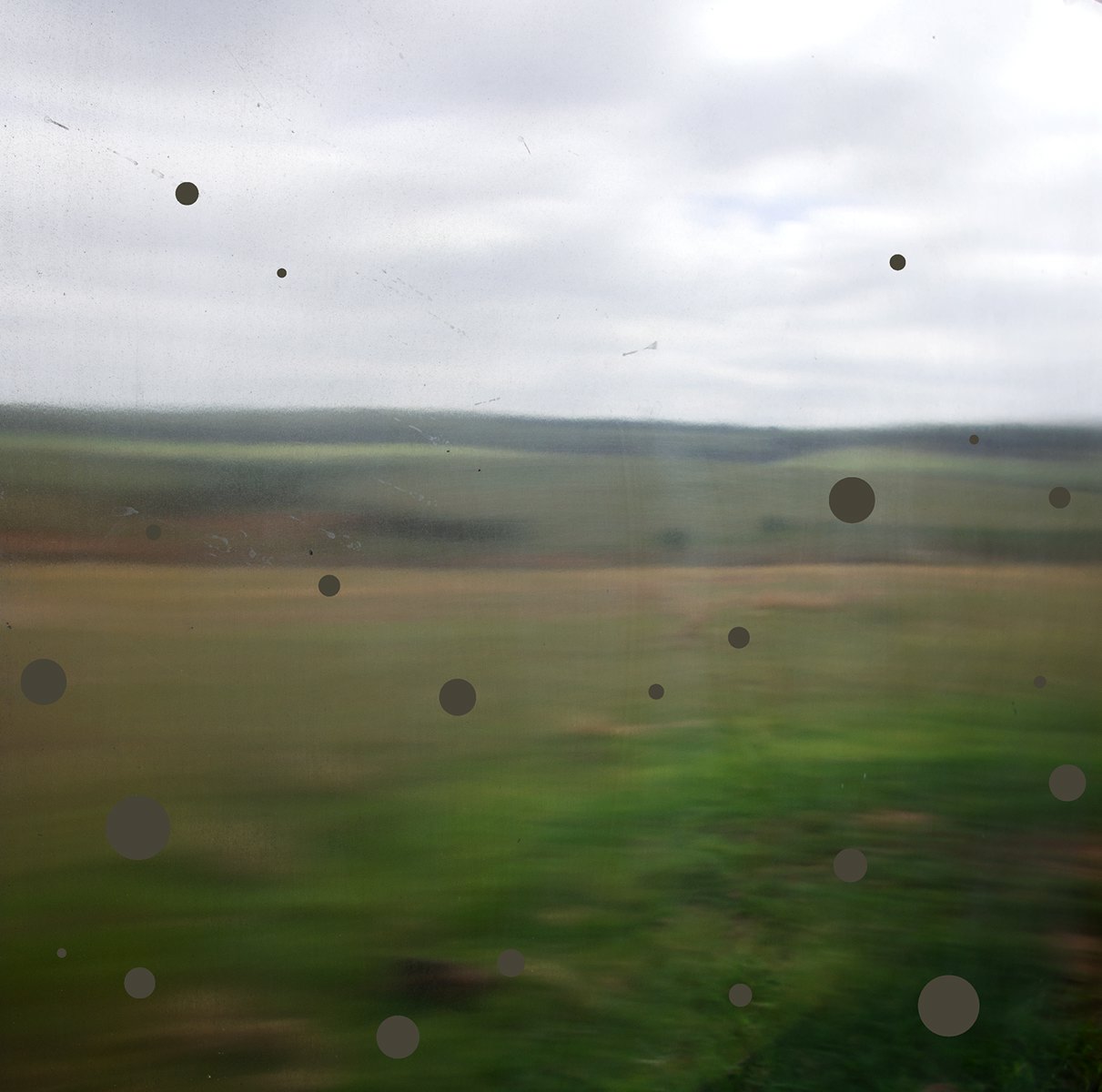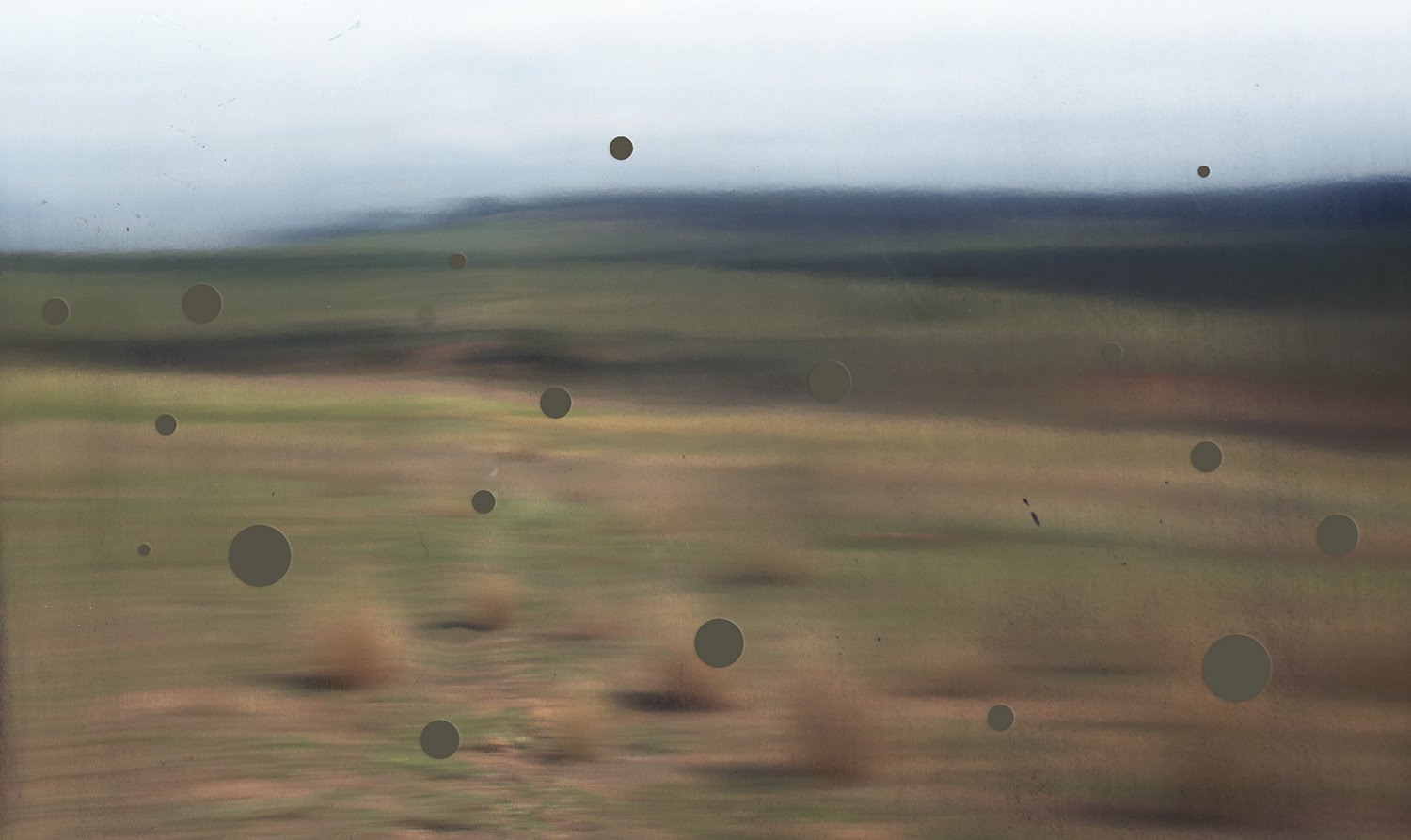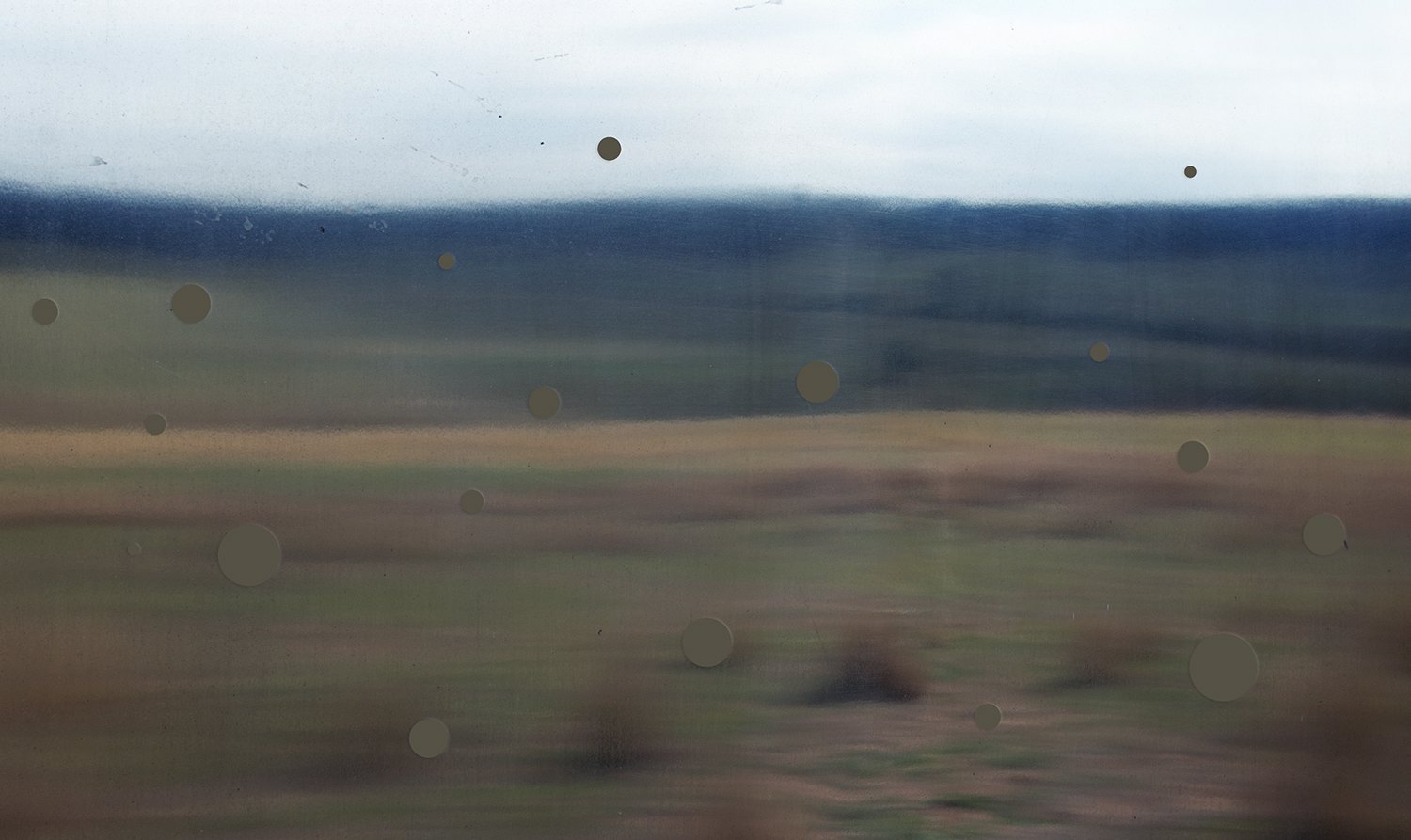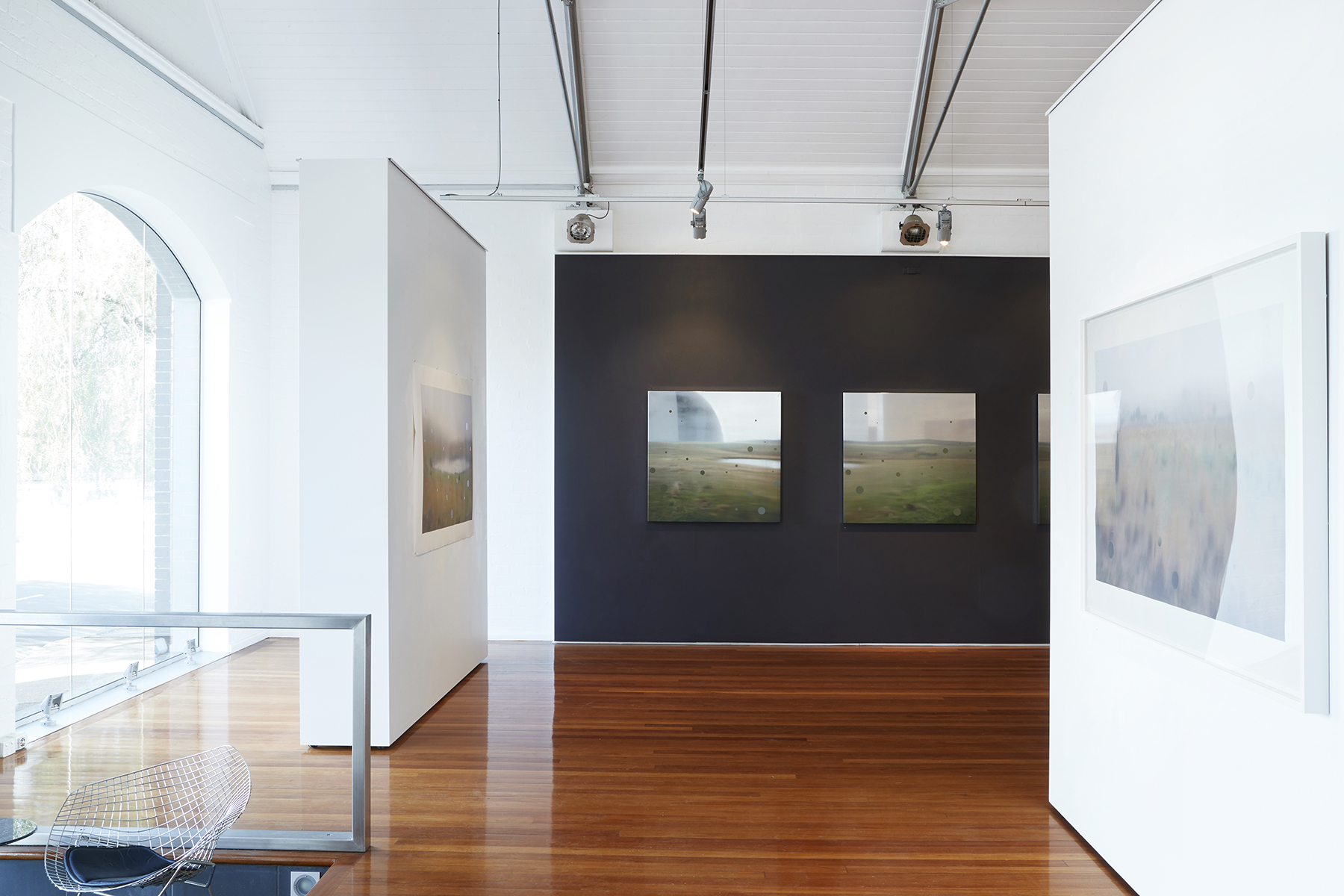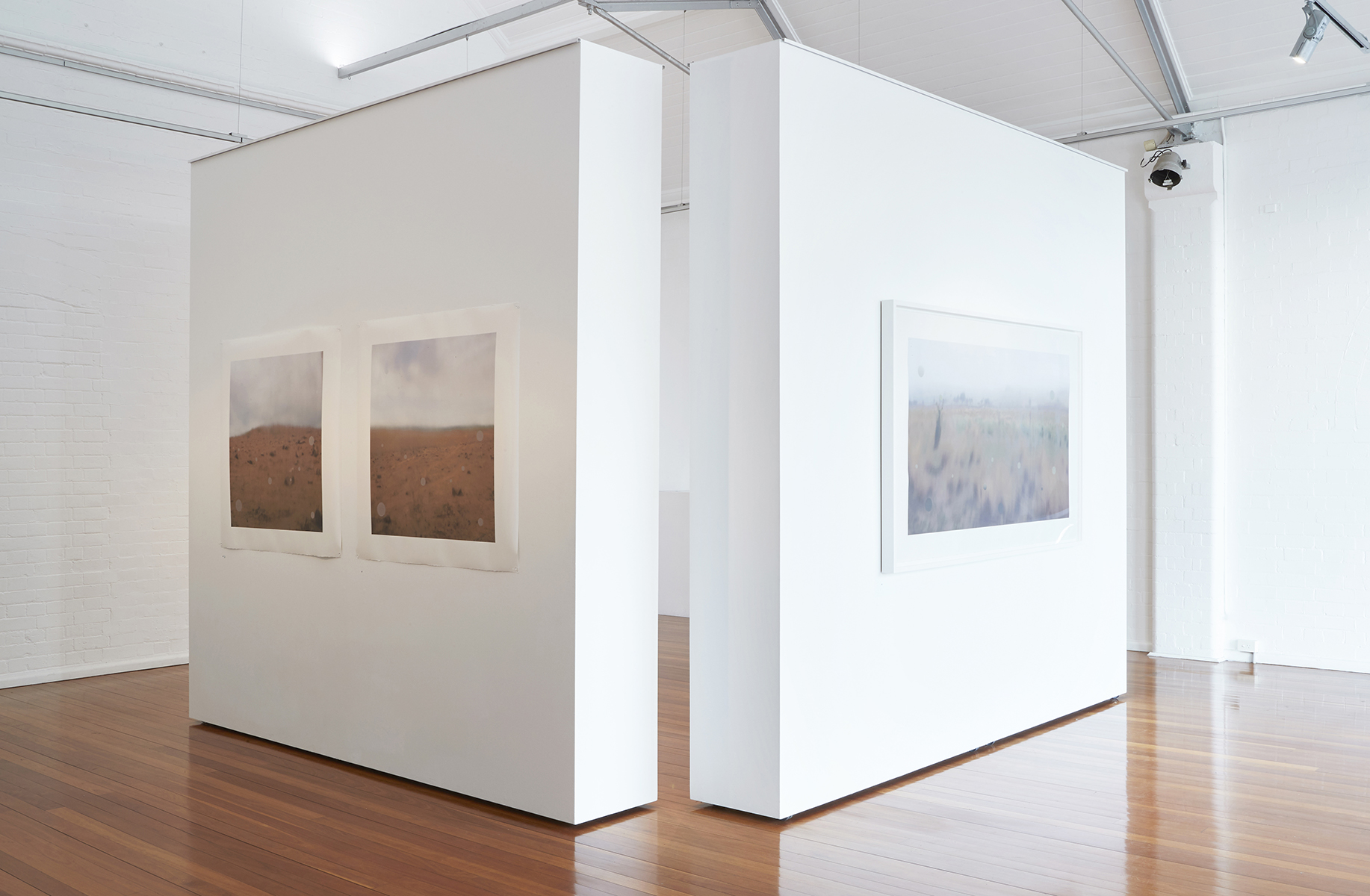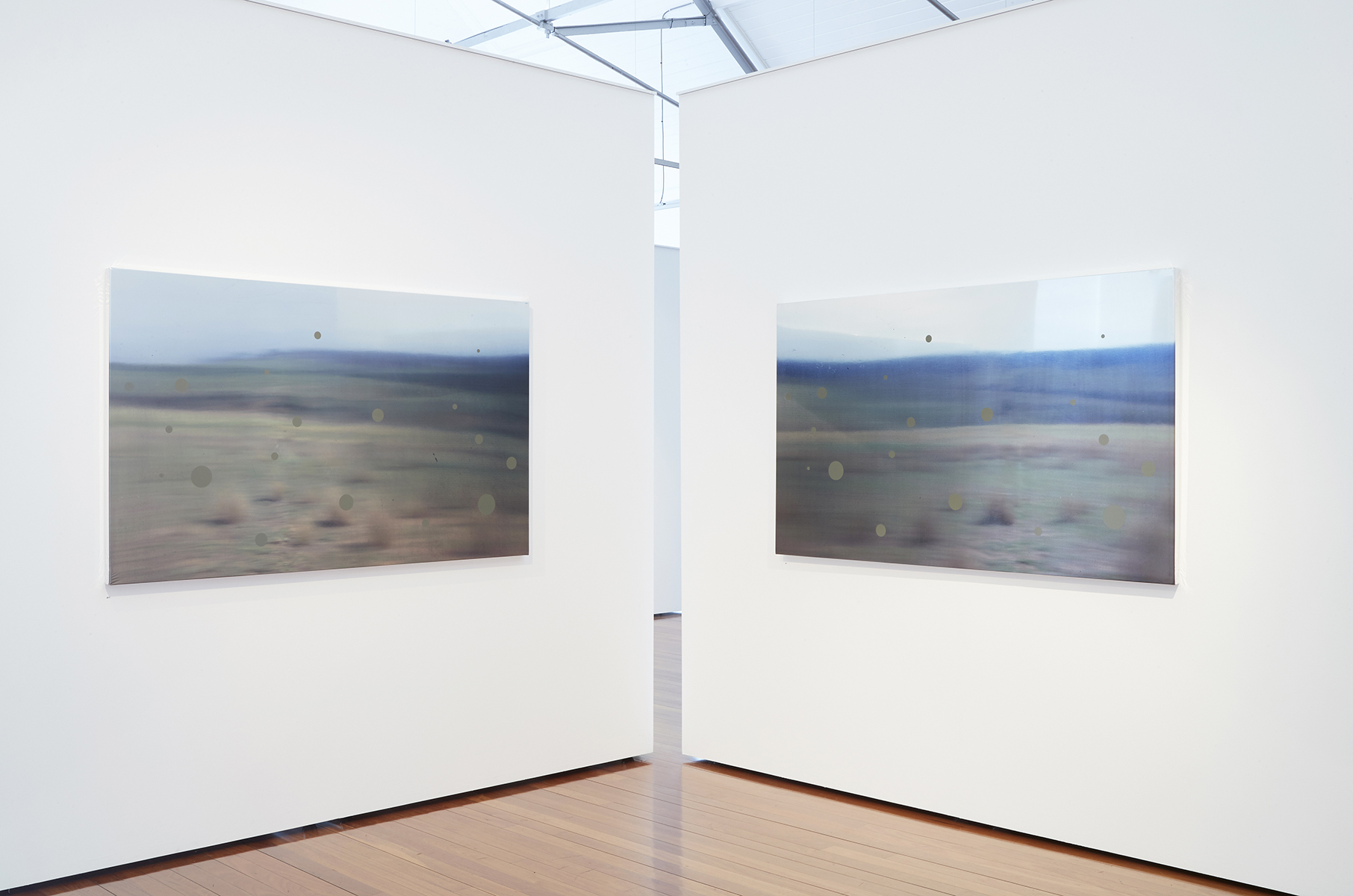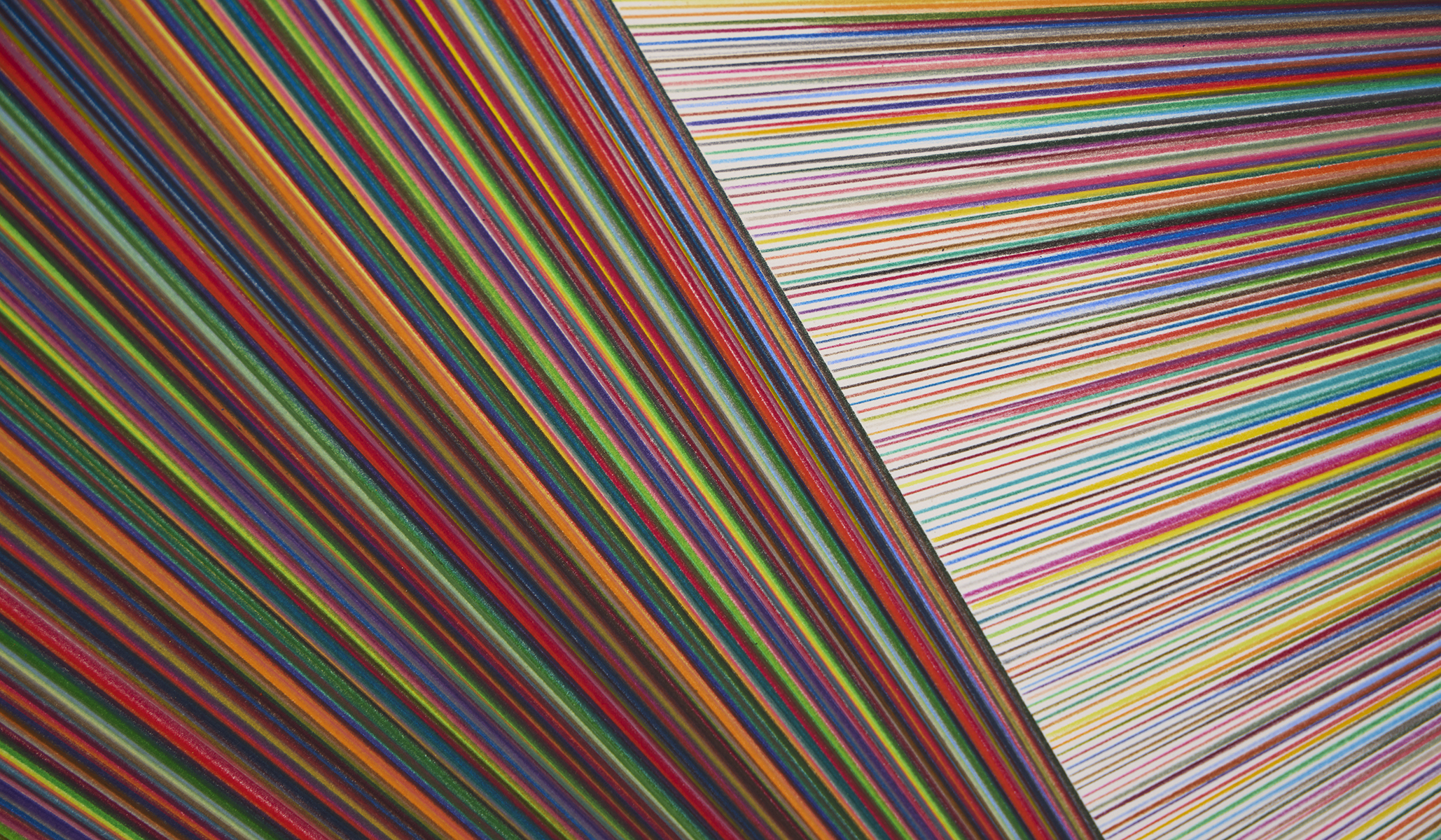Exhibition
“Metaphorically speaking, images are a kind of window to elsewhere, an opening, a threshold, presenting before us something other than here and now; making palpable the distance between one space, one time and another. However fleeting or lingering our gaze, an image is a thing to be looked at, a thing to be read and a thing to ‘behold’.”
– Rebecca Beardmore (2018)
A visual poesy of space, place and perception pervades the sublime, enigmatic, multi-layered, muted evocations of Surface Deep. Visual impressions hover both on and within the surfaces for a charged, dreamlike sense of suspended time, place and memory
A ‘Romantic’ awe of Nature is insinuated in their affect, yet through the accident and incident of materials and surface and in the mesh and mix of affiliated media and materials and Beardmore’s unique aesthetic and perceptual understanding they are at the forefront of contemporary practice.
Rebecca Beardmore is a print-based artist working photographically to explore the act and the ways, both psychological and physical, of looking. Her intrigue is with the interplay of words and pictures and matter and her works are at the cusp, the intersection of the photographic and reprographic.
Printmaking is different from photography in that photography, predicated on the transcription of light, privileges the surface image, With printmaking, it is the encounter with the whole object – the matter of its making (paint and ink and support); the materiality – and the way that images reveal themselves through their matter…
Beardmore uses photography as a way to deflect emphasis from the subject for a kind of “focused blur”. She shoots her theme (for Surface Deep it is landscape) as it appears reflected in the surface of a polished metal sheet. The resultant image is an illusion, perversely denying the veracity attributed photography.
The captured reflection, integrating and intentionally acknowledging flaws in the metal surface is then printed onto paper or (using a flatbed process) embedded into a reflective shrink mirrored fabric surface that is heated and stretched taught onto a wooden frame in the way of canvases. The photo-illusion shimmers, hovers within and obfuscates like an after-image the artist describes as “…soft and indistinct, having a fugitive presence that is almost an absence”.
A hand-pulled screen-printed overlay of barely legible text written by the artist details the scene meticulously and dispassionately, at once mapping and fusing with the surface and provoking a tension between reading, seeing and perception.
A scatter of tonally calibrated screened gloss-enamel circles, (indirectly implying lens, aperture or inkjet pixel?), is laid over text and image, congruent in colour with the backgrounds of individual works, to discreetly but significantly articulate another level of material, of surface and picture plane and bringing further attention to the way images reveal and are read.
Rebecca Beardmore is at the forefront of practice and innovation in her field. Experimentation with unconventional materials characterizes Beardmore’s practice. A master print artist, she exploits traditional techniques and mines the possibilities and innovations of materials and making of allied industries and other creative genres. She is a Lecturer of Contemporary Art at the University of Sydney, Sydney College of the Arts and is delivering a paper on the intersection of printmaking and photography and contemporary art at IMPACT 10, the most significant multidisciplinary International printmaking conference in Europe (Santander, Spain Sept 1-9, 2018). The artist is a previous winner, has been an invited judge, and is a finalist again this year in Australia’s most prestigious print prize, The Fremantle Print Award. Her works are held in the collection of the Art Gallery of New South Wales, international institutional collections including Guangdong Museum of Art, China, Rhode Island School of Art and Design, USA, University of Alberta, Canada and University of Texas Collection, USA.
Barbara Dowse
Curator
This project is supported by the University of Sydney, Faculty of Arts and Social Sciences.




